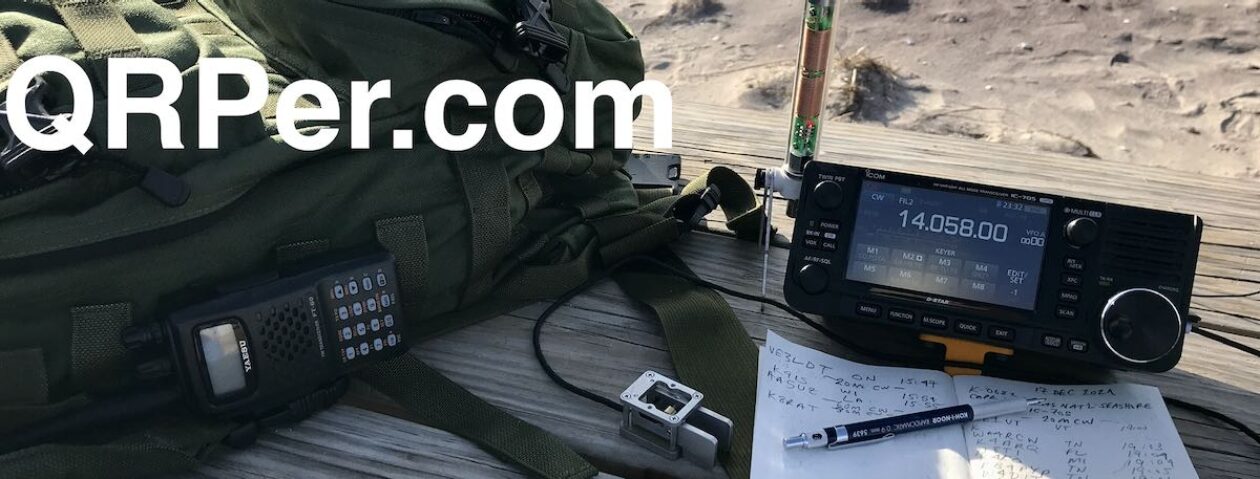A question I’ve received several times since sharing my last field activation with the MTR-4B is “why do Mountain Topper radios have three individual band switches–?”
That’s a great question and the answer is actually in the product manual.
The following comes from the MTR-3B manual but also applies to the MTR-4B (save the 4B has four band positions instead of three):
The band is selected by three, three position slide switches. For proper operation, all three switches must be in the same
column[…]. It’s easy to get into the habit of flipping each switch in sequence from the top down.
The top switch tells the processor which band to operate on and connects the Receiver input filter to the first mixer. The
middle switch connects the transmitter low pass filter output to the antenna and connects the antenna to the receiver
input filter. The bottom switch connects the output of the transmitter PA to the low pass filter.
The manual is correct: it’s easy to get in the habit of sliding all three switches with band changes. It becomes second nature in very short order.
It’s easy to tell that all of the switches are in the correct position as well because without all three switches selected, the receiver sounds deaf and audio muted. With them in position, the receiver sounds “alive.” (That said, the noise floor is so low on these radios, it’s quite possible you might think they’re not engaged properly if there aren’t many signals on the band!) Of course, it’s very easily to visually inspect the switches and confirm they’re in the correct position.
Side note: On the Mountain Topper series, each band switch is an independent mechanical switch. On the Venus SW-3B (which was no doubt inspired by the Mountain Topper) the two band switches are bound together as one:
You can’t tell from looking at the photo above, but if you slide the top switch, you’re also sliding the bottom switch: the two switches are only one mechanical piece. An interesting design choice!
Side Note: The (now discontinued) Mountain Topper MTR-5B had a more complex series of six switches. Here are the instructions for it along with a drawing from the MTR-5B manual:
I hope this helps clarify how/why the Mountain Topper series uses multiple switches for band changes!





Amazing information, I just recently found out how to lower the side tone monitor volume. It’s the black rubber stopper on the back of the unit, you remove that and use a non conductive screwdriver and turn clockwise very tiny increments to lower the volume.
Anyway thanks for the info on the switches!
Yes…that’s it! In fact, in previous models you had to pull apart the whole radio to make the adjustment. Having that access port is a great improvement. I just need to get a dielectric screwdriver!
It comes down to cost. A multipole switch probably wouldn’t fit in that amazing packaging job. They’re also pretty expensive these days. The other approach uses relays, which could be ruled out for the same reason. At least for low-level switching, diodes could do the job, but not for the low-pass filter. Slide switches, though, are dirt-cheap, and an inspired choice on Steve Weber’s part. – K1SWL
These radios are much desired and seemingly sell immediately on QRZ. I would really like to purchase the 4B when available. My interest in CW was piqued, and later solidified, after reading about, and then assembling, my wonderful little 20m Rockmite kit by none other than…K1SWL. Thanks Dave! I hope you are still enjoying retirement!
I am sure older Hams knew why the multiple switches although did not know what exactly was being switched, the CPU does some of it.
In older tube rigs was common to have a single band switch knob connected to a long shaft that passed thru multiple rotary switches. As the band was selected the rotary switches switched in caps and inductors to tune the various stages for the band. Rigs of the 60s, Collins S-line, Heathkit SB line, Drake line and others worked this way.
Today so much is diode switched controlled by the CPU thru PIN diodes and other hardware. And so much is wide band, PAs that cover all of HF, just need filtering to make sure they stay clean.
Due to the need for filtering and keeping things clean it is hard to make RF circuits cover wide range without filters and tuning to keep the harmonics and other unwanted signals down. But much of the Chinese rigs dont care. Take the UV5R, hi.
73, ron, n9ee
Very informative.